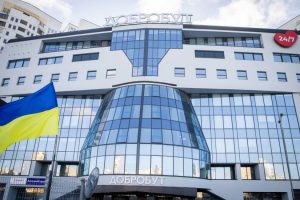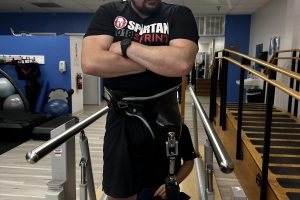Литература
Специи против желченкаменной болезни. Результаты исследований
- Raghavendra, C. K. (2014). Anti-lithogenic potential of dietary tender cluster beans (Cyamopsis tetragonoloba) in experimental animal models. Ph.D. Thesis submitted to the University of Mysore, India.
- Ramaprasad, C. and Sirsi, M. (1975). Curcuma longa and bile secretion–Quantitative changes in the bile constituents induced by sodium curcuminate. J. Sci. Ind. Res.16C:108–110.
- Acalovschi, M. (2001). Cholesterol gallstones: From epidemiology to prevention. Postgrad. Med. J. 77:221–229.
- Admirand, W. H. and Small, D. M. (1968). The physicochemical basis of cholesterol gall stone formation in man. J. Clin. Invest. 47:1043–1052.
- Auer, W., Eiber, A., Hertkorn, E., Hoehfeld, E., Koehrle, U., Lorenz, A., Mader, F., Merx, W., Otto, G. and Schmid-Otto, B. (1990). Hypertension and hyperlipidaemia: Garlic helps in mild cases. Br. J. Clin. Pract. 44:3–6.
- Bellows, C. F., Berger, D. H. and Crass, R. A. (2005). Management of gallstones. Am. Fam. Physician. 72:637–642.
- Beynen, A. C., Visser, J. J. and Schouten, J. A. (1987). Inhibitory effects on lithogenesis by ingestion of a curcuma mixture (Temoe Lawak Singer). J. Food Sci. Technol. 24:253–256.
- Bhat, B. G., Sambaiah, K. and Chandrasekhara, N. (1985). The effect of feeding fenugreek and ginger on bile composition in the albino rat. Nutr. Rep. Int. 32:1145–1151.
- Bhat, B. G., Srinivasan, M. R. and Chandrasekhara, N. (1984). Influence of curcumin and capsaicin on bile secretion and composition in the rat. J. Food Sci. Technol. 21:225–227.
- Bhushan, S., Verma, S., Bhatnagar, V. M. and Singh, J. B. (1977). A study of the hypocholesterolemic effect of onion (Allium cepa) on normal human beings. Indian Med. Gaz. 16:378–379.
- Biddinger, S. B., Haas, J. T., Yu, B. B., Bezy, O., Jing, E., Zhang, W., Unterman, T. G., Carey, M. C. and Kahn, C. R. (2008). Hepatic insulin resistance directly promotes formation of cholesterol gallstones. Nat. Med. 14:778–782.
- Bordia, A. (1981). Effect of garlic on blood lipids in patients with coronary heart disease. Am. J. Clin. Nutr. 34:2100–2103.
- Bordia, A., Bansal, H. C., Khabya, B. L., Arora, S. K. and Singh, S. V. (1974). Effect of essential oil of onion on alimentary lipemia. Indian Heart J. 26:29–31.
- Brosche, T., Platt, D. and Dorner, H. (1990). The effect of a garlic preparation on the composition of plasma lipoproteins and erythrocyte membranes in geriatric subjects. Br. J. Clin. Pract. 44:12–19.
- Cuevas, A., Miquel, J. F., Reyes, M. S., Zanlungo, S. and Nervi, F. (2004). Diet as a risk factor for cholesterol gallstone disease. J. Am. Coll. Nutr. 23:187–196.[Taylor & Francis Online],
- Ebihara, K. and Kiriyama, S. (1985). Prevention of CGS by a water soluble fibre–Konjac Mannan in mice. Nutr. Rep. Int. 32:223–229.
- Festi, D., Frabboni, R., Bazzoli, F., Sangermano, A., Ronchi, M., Rossi, L., Parini, P., Orsini, M., Primerano, A. M. and Mazzella, G. (1990). Gallbladder motility in cholesterol gallstone disease. Effect of ursodeoxycholic acid administration and gallstone dissolution. Gastroenterology. 99:1779–1785.
- Gaby, A. R. (2009). Nutritional approaches to prevention and treatment of gallstones. Altern. Med. Rev. 14:258–267.
- Grunhage, F. and Lammert, F. (2006). Pathogenesis of gallstones: A genetic perspective. Best Pract. Res. Clin. Gastroenterol. 20:997–1015.
- Grunwald, J. (1990). Garlic and cardiovascular risk factors. Br. J. Clin. Pharmacol. 29:582–583.
- Holzbach, R. T., Kibe, A., Thiel, E., Howell, J. H., Marsh, M. and Hermann, R. E. (1984). Biliary proteins. Unique inhibitors of cholesterol crystal nucleation in human gallbladder bile. J. Clin. Invest. 73:35–45.
- Hussain, M. S. and Chandrasekhara, N. (1992). Influence of curcumin on cholesterol gall stone induction in mice. Indian J. Med. Res. 96:288–291.
- Hussain, M. S. and Chandrasekhara, N. (1993). Influence of curcumin and capsaicin on cholesterol gall stone induction in hamsters and mice. Nutr. Res. 13:349–357.[Crossref],
- Hussain, M. S. and Chandrasekhara, N. (1994a). Effect of curcumin and capsaicin on the regression of pre-established cholesterol gall stones in mice. Nutr. Res. 14:1561–1574.[Crossref],
- Hussain, M. S. and Chandrasekhara, N. (1994b). Biliary proteins from hepatic bile of rats fed curcumin or capsaicin inhibit cholesterol crystal nucleation in supersaturated model bile. Indian J. Biochem. Biophys. 31:407–412.
- Jain, R. C. (1971). Effect of onion on serum cholesterol, lipoprotein and fibrinolytic activity of blood in alimentary lipemia. J. Assoc. Phys. Ind. 19:305–310.
- Jain, R. C. and Andleigh, H. S. (1969). Onion and blood fibrinolytic activity. Br. Med. J. 258:514–515.[Crossref],
- Jain, R. C., Sachdev, K. N. and Kaushal, S. S. (1973). Effect of onion ingestion on serum triglyceride, â-lipoprotein-cholesterol & phospholipids in alimentary lipemia. J. Assoc. Phys. (India). 21:357–360.
- Jain, R. C. and Vyas, C. R. (1977). Onion and garlic in atherosclerotic heart disease. 6:12–14.
- Judd, P. A. (1985). Dietary fibre and gallstones. In: Dietary Fibre Perspectives: Reviews and Bibliography, pp. 40–46. Leeds, A. R., Ed., John Libbey, London.
- Kempaiah, R. K. and Srinivasan, K. (2005). Influence of dietary spices on the fluidity of erythrocytes in hypercholesterolemic rats. Br. J. Nutr. 93:81–91.
- Kempaiah, R. K. and Srinivasan, K. (2006). Beneficial influence of dietary curcumin, capsaicin and garlic on erythrocyte integrity in high-fat fed rats. J. Nutr. Biochem. 17:471–478.
- Kiesewetter, H., Jung, F., Mrowietz, C., Pindur, G., Heiden, M., Wenzel, E. and Gu, L. D. (1990). Effects of garlic on blood fluidity and fibrinolytic activity- A randomized, placebo-controlled, double-blind study. Br. J. Clin. Pract. 69:24–29.
- Kiesewetter, H., Jung, F., Pindur, J., Jung, E. M., Mrowietz, C. and Wenzel, E. (1991). Effect of garlic on thrombocyte aggregation, microcirculation, and other risk factors. Int. J. Clin. Pharmacol. Ther. Toxicol. 29:151–155.
- Kleijnen, J., Knipschild, P. and Terriet, G. (1989). Garlic, onions and cardiovascular risk factors. Br. J. Clin. Pharmacol. 28:535–544.
- Kosters, A., Jirsa1, M. and Groen, A. K. (2003). Genetic background of cholesterol gallstone disease. Biochim. Biophys. Acta. 1637:1–19.
- Mader, F. H. (1990). Treatment of hyperlipidaemia with garlic powder tablets. Forsch. Drug Res. 40:3–8.
- Manjunatha, H. and Srinivasan, K. (2007). Hypolipidemic and antioxidant effects of curcumin and capsaicin in high fat fed rats. Can. J. Physiol. Pharmacol. 85:588–596.
- Mansell, P. and Reckless, J. P. D. (1991). Garlic: Effects on serum lipids, blood pressure, coagulation, platelet aggregation, and vasodilatation. Br. Med. J. 303:379–380.
- Mendez-Sanchez, N., Zamora-Valdes, D., Chavez-Tapia, N. C. and Uribe, M. (2007). Role of diet in cholesterol gallstone formation. Clin. Chim. Acta. 376:1–8.
- Ozben, T. (1989). Biliary solids, composition and gall stone formation in rabbits fed on soya protein, cholesterol, casein and modified casein. Biochem. J. 263:293–296.[Crossref],
- Platel, K., Rao, A., Saraswathi, G. and Srinivasan, K. (2002). Digestive stimulant action of three Indian spice mixes in experimental rats. Nahrung. 46:394–398.[Crossref],
- Platel, K. and Srinivasan, K. (2000). Stimulatory influence of select spices on bile secretion in rats. Nutr. Res. 20:1493–1503.[Crossref],
- Platel, K. and Srinivasan, K. (2004). Digestive stimulant action of spices: A myth or reality? Indian J. Med. Res. 119:167–179.
- Portincasa, P., Moschetta, A. and Palasciano, G. (2006). Cholesterol gallstone disease. Lancet. 368:230–239.
- Raghavendra, C.K. (2014). Anti-lithogenic potential of dietary tender cluster beans (Cyamopsis tetragonoloba) in experimental animal models. Ph.D. Thesis submitted to the University of Mysore, India.
- Raghavendra, C. K. and Srinivasan, K. (2014a). Anti-cholelithogenic potential of dietary tender cluster beans (Cyamopsis tetragonoloba) during experimental formation of cholesterol gallstones in mice. Appl. Physiol. Nutr. Metab. 39:152–157.
- Raghavendra, C. K. and Srinivasan, K. (2014b). Potentiation of anti-cholelithogenic influence of dietary tender cluster bean (Cyamopsis tetragonoloba) by garlic (Allium sativum) in experimental mice. Indian J. Med. Res. 142:462–470.
- Raghavendra, C. K. and Srinivasan, K. (2015). Influence of dietary tender cluster beans (Cyamopsis tetragonoloba) on biliary proteins, bile acid synthesis and cholesterol crystal growth in rat bile. Steroids. 94:21–30. doi:10.1016/j.steroids.2014.12.003.
- Raghavendra, C. K. and Srinivasan, K. (in press). Attenuation of pre-established cholesterol gallstones by dietary tender cluster beans (Cyamopsis tetragonoloba) in mice. J. Exp. Pathol.
- Ramaprasad, C. and Sirsi, M. (1975). Curcuma longa and bile secretion–Quantitative changes in the bile constituents induced by sodium curcuminate. Sci. Ind. Res.16C:108–110.
- Reddy, R. L. R. and Srinivasan, K. (2009a). Fenugreek seeds reduce atherogenic diet induced cholesterol gallstone formation in experimental mice. Can. J. Physiol. Pharmacol. 87:933–943.
- Reddy, R. L. R. and Srinivasan, K. (2009b). Dietary fenugreek seed regresses preestablished cholesterol gallstones in mice. Can. J. Physiol. Pharmacol. 87:684–693.
- Reddy, R. L. R. and Srinivasan, K. (2011a). Hepatoprotective and antioxidant effect of fenugreek (Trigonella foenum-graecum) seeds in mice under lithogenic condition. Food Biochem. 35:1619–1626.[Crossref],
- Reddy, R. L. R. and Srinivasan, K. (2011b). Effect of dietary fenugreek seeds on biliary proteins which influence nucleation of cholesterol crystals in bile. Steroids. 76:455–463.
- Reddy, R. L. R. and Srinivasan, K. (2011c). Antilithogenic influence of dietary fenugreek seeds and onion in experimental mice. Int. J. Exp. Pathol. 92:308–319.
- Sainani, G. S., Desai, D. B., Gorhe, N. H., Natu, S. M., Pise, D. V. and Sainani, P. G. (1979). Effect of dietary garlic and onion on serum lipid profile in Jain community. Indian J. Med. Res. 69:776–780.
- Sambaiah, K. and Srinivasan, K. (1991). Secretion and composition of bile in rats fed diets containing spices. J. Food Sci. Technol. 28:35–38.
- Scobey, M. W., Johnson, F. L., Parks, J. S. and Rudel, L. L. (1991). Dietary fish oil effects on biliary lipid secretion and cholesterol gall stone formation in the African green monkeys. 14:679–684.
- Shaffer, E. (2006). Epidemiology of gallbladder stone disease. Best Pract. Res. Clin. Gastroenterol. 20:981–996.
- Sharma, K. K., Choudhury, N. K., Sharma, A. L. and Misra, M. B. (1975). Studies on hypocholesterolemic activity of onion: Effect on serum cholesterol in alimentary lipemia in man. Indian J. Nutr. Dietet. 12:288–291.
- Sharma, K. K. and Sharma, S. P. (1979). Effect of onion and garlic on serum cholesterol in normal subjects. Mediscope. 22:134–136.
- Sharma, R. D. (1986). Effect of fenugreek seeds and leaves on blood glucose and serum insulin responses in human subjects. Res. 6:1353–1364.[Crossref],
- Sharma, R. D. and Raghuram, T. C. (1990). Hypoglycemic effect of fenugreek seeds in non-insulin dependent diabetic subjects. Res. 10:731–739.[Crossref],
- Sharma, R. D., Raghuram, T. C. and Rao, S. N. (1990). Effect of fenugreek seeds on blood glucose and serum lipids in type I diabetes. Eur. J. Clin. Nutr. 44:301–306.
- Shubha, M. C., Reddy, R. L. R. and Srinivasan, K. (2011). Anti-lithogenic influence of dietary capsaicin and curcumin during experimental induction of cholesterol gallstone in mice. Appl. Physiol. Nutr. Metab. 36:201–209.
- Sowmya, P. and Rajyalakshmi, P. (1999). Hypocholesterolemic effect of germinated fenugreek seeds in human subjects. Plant Food Hum. Nutr. 53:359–365.
- Srinivasan, K. (2005a). Plant foods in the management of diabetes mellitus: Spices as potential antidiabetic agents. Int. J. Food Sci. Nutr. 56:399–414.[Taylor & Francis Online],
- Srinivasan, K. (2005b). Role of spices beyond food flavouring: Nutraceuticals with multiple health effects. Food Rev. Int. 21:167–188.[Taylor & Francis Online],
- Srinivasan, K. (2013). Dietary spices as beneficial modulators of lipid profile in conditions of metabolic disorders and diseases. Food Funct. 4:503–521.
- Srinivasan, K. (2014). Antioxidant potential of spices and their active constituents. Crit. Rev. Food Sci. Nutr. 54:352–372.[Taylor & Francis Online],
- Srinivasan, K. and Sambaiah, K. (1991). Effect of spices on cholesterol-7α-hydroxylase activity and on serum and hepatic cholesterol levels in the rat. Int. J. Vitam. Nutr. Res. 61:364–369.
- Srinivasan, K., Sambaiah, K. and Chandrasekhara, N. (2004). Spices as beneficial hypolipidemic food adjuncts: A Review. Food Rev. Int. 20:187–220.[Taylor & Francis Online],
- Thimmayamma, B. V. S., Rao, P. and Radhaiah, G. (1983). Use of spices and condiments in the dietaries of urban and rural families. Indian J. Nutr. Dietet. 20:153–162.
- Vidyashankar, S., Sambaiah, K. and Srinivasan, K. (2009). Dietary garlic and onion reduce the incidence of atherogenic diet induced cholesterol gallstone in experimental mice. Br. J. Nutr. 101:1621–629.
- Vidyashankar, S., Sambaiah, K. and Srinivasan, K. (2010a). Regression of preestablished cholesterol gallstones by dietary garlic and onion in experimental mice. Metabolism. 59:1402–1412.
- Vidyashankar, S., Sambaiah, K. and Srinivasan, K. (2010b). Effect of dietary garlic and onion on biliary proteins and lipid peroxidation which influence cholesterol nucleation in bile. Steroids. 75:272–281.
- Vorberg, G. (1990). Therapy with garlic: Results of a placebo-controlled double-blind study. Br. J. Clin. Pract. 44:7–11.
- Wang, D. Q. H., Cohen, D. E. and Carey, M. C. (2009). Biliary lipids and cholesterol gallstone disease. J. Lipid Res. 50:S406–S411.
- Zimmermann, W. and Zimmermann, B. (1990). Reduction in elevated blood lipids in hospitalized patients by a standard garlic preparation. J. Clin. Practice. 44:20–23.













Комментировать